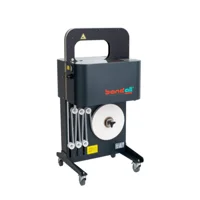
Bands vs adhesive labels: Why adhesives are holding packaging back
As mentioned in our previous blog, "Bands vs adhesive labels: A general analysis", governments and regulatory bodies across the globe are pushing for a circular economy in which packaging has to be fully recyclable and lessen their impact on the environment.
For example, in the EU, and foreign countries importing goods into the EU, businesses are being pushed to re-evaluate every aspect of their packaging strategy because of the upcoming Packaging and Packaging Waste Regulation (PPWR), which is set to reshape how packaging is designed, labeled, and recycled. Companies outside the EU that sell into the European market will also need to comply with these new rules.
In this blog, we’ll explore what the PPWR demands, and why adhesive labels, though common, may not be the future-proof solution they once seemed. We’ll also highlight how banding offers a forward-looking alternative better suited to the regulatory shifts ahead.
Key takeaways
- PPWR emphasizes minimal packaging and maximum recyclability, two criteria where adhesives often fall short.
- Adhesive labels may appear efficient, but they introduce contamination risks and branding limitations.
- Banding is adhesive-free, fully recyclable, and balances branding needs with material efficiency.
- Future readiness requires businesses to evaluate compliance beyond cost and speed, but also how packaging can meet regulatory standards.
What Does the PPWR Require?
The PPWR proposes two core packaging mandates:
- Packaging must be as efficient as possible. This means using the least amount of material necessary to fulfill a function, be it protection, transport, or communication, without compromising performance.
- Packaging must be optimized for recycling. Materials should be easily separated, sorted, and processed to enable high-quality recycling with minimal contamination.
These principles aim to minimize packaging waste and maximize the circular use of resources across the EU market.

Adhesive labels: A growing compliance concern
When viewed through the lens of the PPWR, adhesive labels reveal potential limitations:
- Recyclability challenges: The adhesive component of these labels introduces contaminants that complicate the recycling process. Sticky residues can hinder the separation of materials, reducing recyclability and potentially downgrading the entire packaging stream.
- Material inefficiency: Because adhesive labels are so small and have no other way of remaining intact to packaging, they need some form of glue to stick. Unlike banding or sleeves, for example, that are sealed or designed in such a way to remain intact with the primary packaging, the smallness of labels can actually be seen as inefficient material usage.
- Single-Use Limitations: Once applied, adhesive labels are difficult to remove without damaging the packaging or leaving behind residue. This restricts their reusability and goes against the PPWR’s focus on optimizing material use throughout the product lifecycle.
- Liner waste: Adhesive labels require backing liners to protect the sticky surface before application. These liners typically become waste, adding to the environmental burden and reducing the overall material efficiency of the solution.
- Regulatory ambiguity: As the emphasis of the PPWR leans more toward recyclability and efficiency than mere material reduction, adhesive labels risk falling short. Their potential to contaminate packaging streams could outweigh their efficiency benefits, putting companies at odds with future compliance expectations.
Banding: Designed for a Circular Economy
In contrast, banding aligns naturally with PPWR’s goals:
- Adhesive-free design: By eliminating glue, bands remove a major obstacle in the recycling chain. They can be easily separated from the primary packaging without leaving any contaminants behind.
- Optimal material usage: During banding, the optimal amount of material is calculated and used to brand and label a product, and is sealed with heat technology to ensure it remains intact.
- Multi-Purpose Efficiency: Banding is a multifunctional solution. It not only communicates product information and branding, but also enables bundling and making products 100% tamper-evident. This is done with optimal material usage, further supporting its commitment to the PPWR and other regulatory expectations.
- No Liner Waste: Unlike adhesive labels, banding materials are linerless. This eliminates an entire waste stream from the packaging process and contributes to cleaner operations.
- Balanced efficiency and Branding: Bands provide ample surface area for branding and regulatory labeling without excessive material usage. This creates a dual benefit: meeting the functional and marketing needs of packaging while staying within PPWR’s efficiency expectations.
Banding doesn’t force a trade-off between visibility and compliance; it balances both.
Time to Rethink Your Labeling Strategy
The packaging landscape is changing fast, and compliance will soon be non-negotiable. Adhesive labels may still dominate shelves today, but their compatibility with future regulations, especially those prioritizing recyclability, is increasingly in question.
Banding, on the other hand, is built with tomorrow in mind. It meets regulatory demands without sacrificing branding, shelf appeal, or sustainability.
If your business wants to stay ahead of compliance curves and consumer expectations, now is the time to reconsider: Are adhesives holding you back from the future of packaging?
Questions about our banding solutions?
Together we can find opportunities to optimize your packaging.
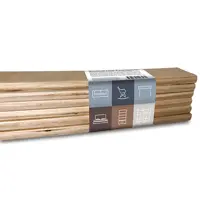
Applications of banding
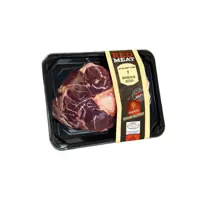
Bands vs sleeves: Impact of weight

Band vs sleeves: Which is more efficient?
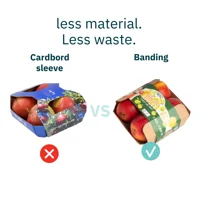
Banding vs. other solutions

Benefits of banding
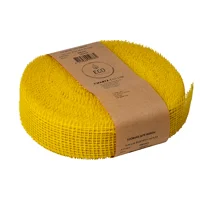
Zwartz - From shrink wrap to paper bands

Novatrade - Improved quality and efficiency

Packaging food products
